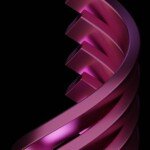Recovering the Forefront: Strategic Requirements for Laser CNC Machine Upgrade
In the ruthless pursuit of precision and efficiency in modern manufacturing, your laser CNC machine is an important force. But technology will never stop. The cutting edge of five years ago may now block your production. At Greatlight, a leader in five-axis CNC machining with deep expertise in advanced equipment and complex metal parts manufacturing, we have witnessed first-hand how strategic upgrades can change the performance of laser CNCs. Ignoring these advancements could mean lagging behind in quality, speed and ultimate profitability. This blog delves into the engaging world of laser CNC machine upgrades, explaining why they are important, what options and how to unlock important advantages for competitive advantage – taking you beyond basic maintenance and into the realm of optimized performance.
Why Upgrading a Laser CNC System Is More Than an Option
Laser CNC machines are a lot of investment, and the instinct may be to run them "Until they fall." However, targeted upgrades offer smarter and often more cost-effective ways than direct replacements:
- Increase productivity and throughput: New laser sources such as high-power fiber lasers, advanced motion control systems and optimized software can significantly reduce cycle times and increase hourly parts output without purchasing a brand new machine.
- Enhanced accuracy and capability: Beam delivery optical upgrades, laser source stability (e.g., the single-mode fiber lasers of better KERFS), and position accuracy (via servo/drive upgrades or linear scale retrofits) allow you to solve tighter tolerances, thinner materials, and more complex materials that were previously out of range.
- Expand the material and application scope: Want to effectively deal with copper, brass, or highly reflective metals? Or cut thicker materials? Upgrading to a new laser source type (such as pulse fiber lasers) or a specific processing head (such as capacitance height control) opens a new door.
- Cut operating costs: Modern lasers, especially fiber lasers, are much higher than older CO2 systems. Upgrades can also minimize auxiliary gas consumption and reduce waste rates that reduce costs due to increased quality and consistency.
- Improve reliability and uptime: Replacing the critical components of aging (power, cooler, motion controller) before failure prevents unexpected downtime from generating schedules. Software upgrades usually include predictive maintenance features.
- Improve safety and connectivity: The newer control system integrates modern security protocols, remote monitoring capabilities, and industry 4.0 connectivity capabilities for data acquisition and analysis, improving safety standards and production visibility.
Key areas for enhanced performance upgrades
Potential upgrades are broad and solutions tailored to your specific needs and budget:
-
Laser source replacement:
- Carbon dioxide conversion to fiber laser conversion: It can be said to be the most transformative upgrade. Fiber lasers offer excellent wall insertion efficiency, faster cutting speeds (especially on thin metals), lower maintenance and excellent beam quality for high accuracy. This is usually a high investment.
- Fiber laser upgrade: Moving from a low-power fiber laser to a higher power unit (e.g. 2kW to 6kW) makes it easier to cut thicker materials.
- Source technology upgrade: Switch to more advanced fiber lasers, such as single mode or modulation/pulse lasers for more details, reduce heat-affected areas or deal with highly reflective metals.
-
Motion control and drive system enhancement:
- Servo motor and drive upgrades: Updated, faster and more accurate motors and drivers enhance acceleration, deceleration and positioning accuracy, minimizing ringing and improving profiles.
- Linear proportional feedback transformation: Adding a direct position feedback device (linear scale/encoder) to the shaft bypassing the mechanical rebound inherent in the screw/frame, greatly improving absolute positioning accuracy and repeatability.
- Upgraded controller and CNC system: Replacing outdated controls with a platform for modern PCs provides faster processing, improved user interface, advanced tool path optimization algorithms, and integration with CAM software, MES and ERP systems.
-
Beam Delivery and Optical Components:
- Advanced cutting head: Water-cooled head with adjustable direct head, capacitance height sensing (usually a key add-on for perforation sequences and uneven materials), and protective lens technology can greatly improve cutting stability, quality and life-consuming.
- Beam path optimization: Replacing aging mirrors, lenses and fiber feed ensures maximum beam quality to the workpiece, which is critical for consistent cutting and edge quality. Consider upgrading to protect longer lifespans.
- Nozzle technology: Upgrading the nozzle to a design designed for specific materials and processes (high-speed cutting, perforated thick plates) improves gas dynamics and cutting quality.
-
Software and control upgrades:
- New operating systems and software: Access the latest nested software, dedicated cutting libraries (e.g. for specific alloys), advanced KERF compensation and collision avoidance.
- Process monitoring and automation: Add a camera system or nozzle alignment check for automatic part verification. Implement sensors for real-time quality reduction monitoring.
- Connectivity (Industry 4.0): Enable OPC UA, MQTT or other protocols for machine data collection, remote diagnosis, preventive maintenance planning, and integration into a smart factory environment.
- Improvements to the auxiliary system:
- Cooler upgrade: Newer, more efficient coolers are critical to stabilizing higher power lasers and are often quieter. Ensure compatibility and performance.
- Flue gas extraction enhancement: Upgrade the extraction system to safely handle increased cutting speeds or new materials and comply with evolving environmental regulations.
- Material handling automation: Integrate or upgrade the automatic load/unloading system (tray, conveyor) to maximize the use of faster laser processing.
Weighing returns: The tangible impact of investment
Upgrades are more than just new hardware; here is about measurable results:
- Faster ROI: Specific upgrades such as switching to fiber lasers often pay for themselves quickly through energy savings, productivity jumps and reduced consumption costs.
- Extended device life: Modern critical subsystems breathe new life into robust machine cases, delaying millions of dollars in alternative demand.
- Enhanced flexibility: Improve competitiveness by adopting a variety of projects that require higher accuracy, speed or material compatibility.
- Improve quality: Achieve smoother edges, more precise holes, tighter tolerances and less thermal distortion, reducing finishing time and waste.
- Operational flexibility: Increase machine uptime by increasing reliability and enabling predictability maintenance through upgraded controls.
Navigation Upgrade Journey: Choose the Right Road with the Help of Experts
Decide What and when To upgrade, you need to consider carefully:
- Evaluate requirements: Identify bottlenecks: Speed? accuracy? Material restrictions? Cost per part? Downtime?
- Priority: Focus on providing the highest ROI first or solving critical issues upgrades. A modular approach may be feasible.
- Evaluate compatibility: Ensure potential upgrades work harmoniously in existing machine tool structures. Not all upgrades are generally compatible.
- Work with experts: This is crucial. Work with experienced integrators and manufacturers, such as Greatlight, who understand complex power systems. They provide:
- Detailed feasibility study and ROI analysis.
- Trial capability and risk assessment.
- A proprietary integration approach to seamless upgrades.
- Continuous support and optimization. Our in-depth expertise in complex five-axis CNC machining translates into a nuanced understanding of the precise motion control and integrated systems required for successful laser upgrades.
- Support Program: Delegation, operator training for new features and factors supporting continuous maintenance.
in conclusion
In an increasingly competitive environment, gaining a foothold is not an option. Laser CNC machine upgrades represent strategic imperatives, not just technical possibilities. They provide a powerful, cost-conscious alternative to your existing assets, which replaces complete machine replacements, breathe new life, speed, accuracy and ability. By carefully evaluating your needs, you can understand the various upgrade paths available – from the transformative power of fiber laser sources to the improvement in accuracy of linear scales and advanced controls – and working with knowledgeable and experienced professionals at Greatlight (Greatlight), you can unlock great value. This investment improves your manufacturing capabilities, cuts operating costs, improves quality, and ensures you are at the forefront of precision metal cutting.
Ready to explore how your laser CNC upgrade revolutionizes your production? Contact Greatlight today for personalized consultation and leverage our deep technical expertise to implement your goal upgrade strategy.
FAQ Upgrade on Laser CNC Machines
Q1: Is it really worth upgrading my old CO2 laser to a fiber laser?
A1: Absolute. This is usually the most influential escalation. Fiber lasers can usually provide 2-4 times cutting speed on thin metals, consuming 30-50% of energy, and have significantly reduced maintenance costs (gas-free mixtures, laser tube replacement, complex optical alignment), providing quality details for the effect and handling reflected metals more easily. ROI is usually fast (usually less than 2 years).
Q2: Can I upgrade a specific component or do I need to replace the entire machine?
A2: Modular upgrades are very common and are usually recommended. You can strategically target specific bottlenecks: upgrade only laser sources, revamp new CNC controllers, add high-precision linear scale systems, improve cutting heads or enhance software. Usually, if the machine structure itself is fundamentally worn or unable to support the required upgrade, you usually just need to replace it completely.
Q3: How long does it take to upgrade a typical laser CNC?
A3: Duration depends on complexity. Laser source exchange can take several days to a week, including commissioning. Upgrading the entire control system, drives and motors can take 1-3 weeks. Linear scale modifications may take several days per axis. Professional integrators like Greatlight will provide detailed timeline estimates for your specific situation.
Question 4: Will my machine warranty be upgraded?
A4: If your machine is still covered by the original manufacturer’s warranty, any material modifications made by a third party Will be Typically, warranties may exist on affected components and the entire machine. It is crucial to have a pre-discuss the meaning of a warranty with your chosen upgrade provider. This is not a problem for older machines with warranty coverage.
Q5: What are the safety considerations?
A5: Safety is crucial. Upgrades involving laser source replacement require compliance with strict laser safety standards (e.g., ANSI Z136.1, IEC 60825). Electrical work must comply with NFPA 79 or related regional standards. Professional integrators ensure housing, interlocking, beam path integrity, extraction flue gas extraction and safety controls comply with or exceed current standards. Expect a thorough security re-evaluation and post-upgrade testing.
Question 6: How to ensure that the upgrade is compatible with existing machines?
A6: Strict feasibility analysis is key. Competitive partners like Greatlight will carefully evaluate the machine’s mechanical structure, original design specifications, power requirements and current conditions. We use digital twins and advanced simulation tools to model integrations when necessary. Proprietary mechanical interfaces and custom installation solutions can be developed to ensure seamless compatibility and performance.
Question 7: Where can I get expert advice and reliable upgrade services?
A7: Find a partner:
- Have extensive experience with specific machine platforms or similar systems.
- Internal engineering expertise covers mechanics, electrical systems, laser physics and software control.
- Ability to conduct a thorough pre-upgrade assessment and provide a clear ROI forecast.
- Powerful processes for project management, integration, debugging and post-install support.
- There are strong references in the industry. Greatlight has the depth of CNC expertise and is fully applied to precise upgrades of our own manufacturing and partner equipment.

















